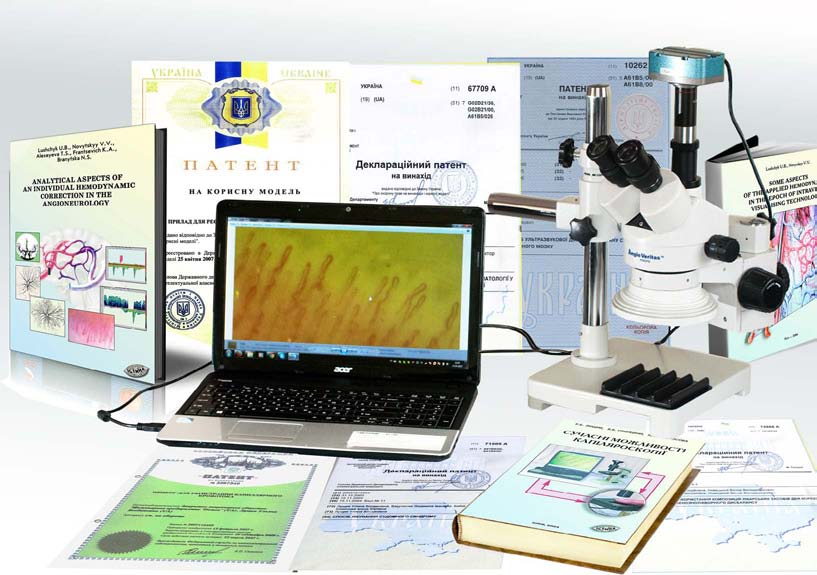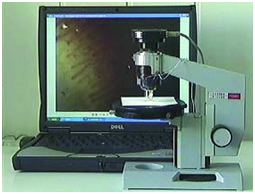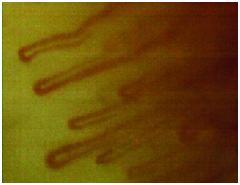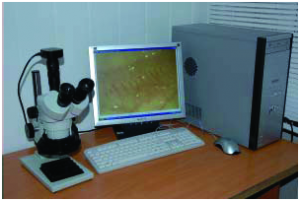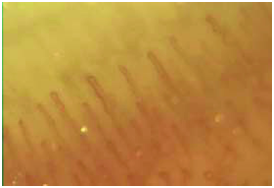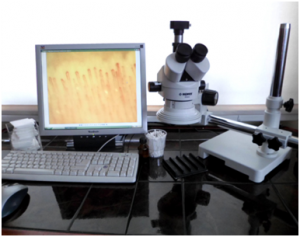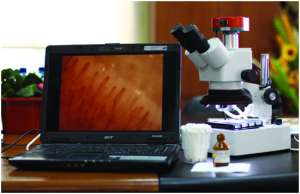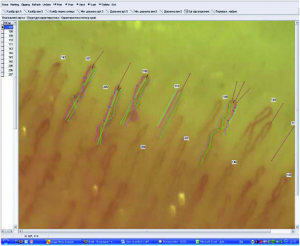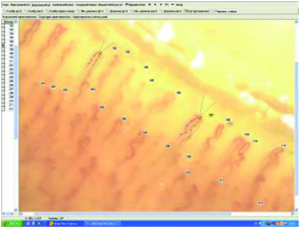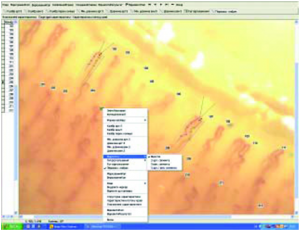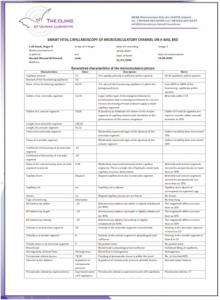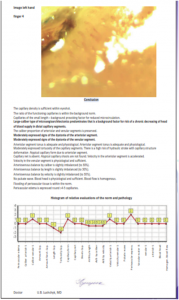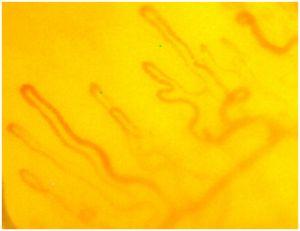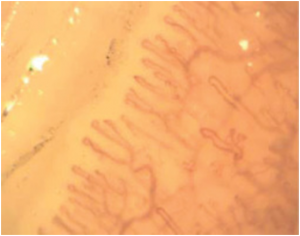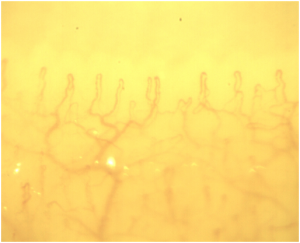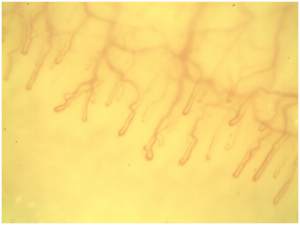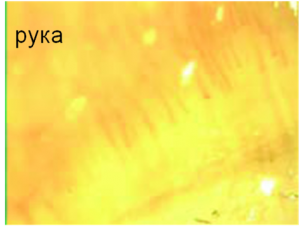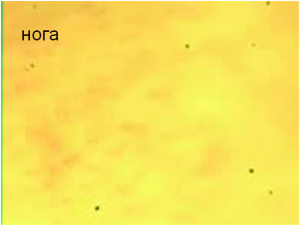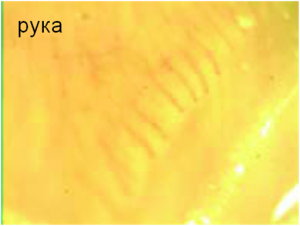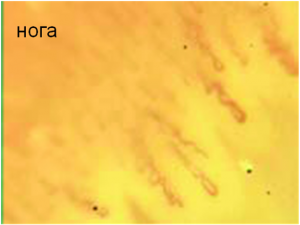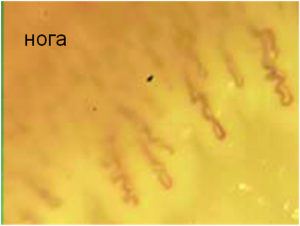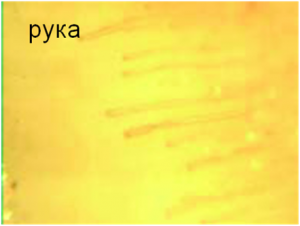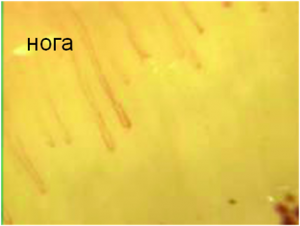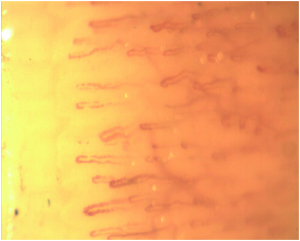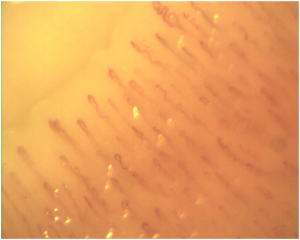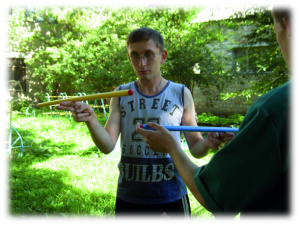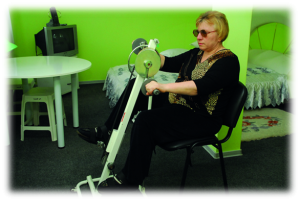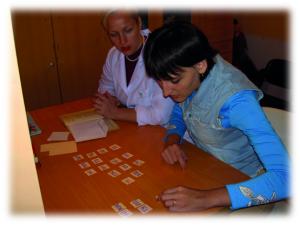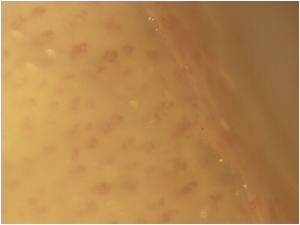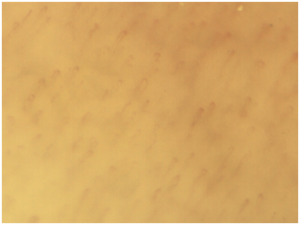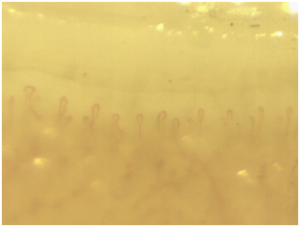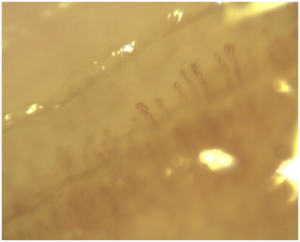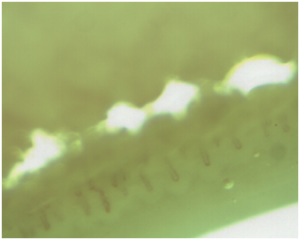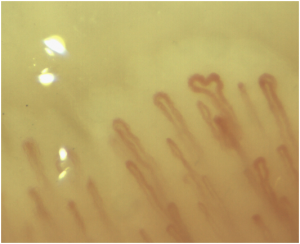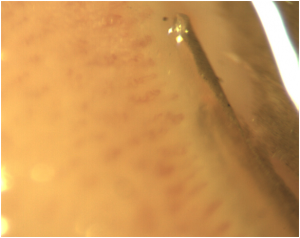????????? ??? ??????? ???????
Article in Journal of the European Association of Preventive Medicine
It’s a real tool in the fight against cardiovascular diseases.
Reliable diagnosis, which doctors and patients can understand.
- For a patient – rapid and available information about the cardiovascular system’s state.
- For a doctor – quick objectification of processes for decision-making, enhanced customer.
- For health care – independent tool of evidence-based medicine, means for legal support and protection against medical mistakes.
NEW!
IT component enables to:
- visualise problems at various stages of CVD,
- make computer analysis of detected disorders and possible risks,
- create subtechnologies for making tactic decisions in neonatology, paediatrics, angiology, cardiology, angioneurology, oncology, rehabilitation, balneology, insurance medicine.
The technology ideologist – a member of the Academy of Technological Sciences of Ukraine,
Ulyana Lushchyk, MD
From visualization of the capillary to a technology of assessment of a vascular pathology and the risk prevention
Each new version provides improved resolution and image quality, methodology improvement for application in diagnostic and treatment process.
1st version of the device and the example of capillary images, 1999.
Disadvantages: old optics, poor visualization, low increase, a lot of artifacts.
2nd version of the capillaroscope, 2003.
Improved contrast, the quality of visualization, the ability to increase up to 100 times, the ability to observe the speed of blood flow.
Disadvantages: unclear and unstable images do not allow counting capillary parameters.
3rd version of the device, 2006.
Improved clarity of visualization of capillaroscopic images, the ability to increase has risen to 300. The obtained images enabled to calculate large number of microcirculation parameters in the semi-automatic mode and managed to gain experience to create a vascular screening technology. Disadvantages: currently this version is obsolete.
2013.
Last, 4th version enabled to:
- significantly improve the quality and clarity at different magnifications;
- increase the dynamic range of the optical zoom from 50 to 400 times;
- apply the automatic processing of static images;
- create a series of instruments and subtechnologies for different specialists – angio- and cardiosurgeons, oncologists, psychoneurologists, cardiologists, neonatologists and pediatricians, intensive care and rehabilitation specialists, endocrinologists;
- apply this technology due to non-contact technique in dentistry (periodontics), neurosurgery and gynecology;
- predict vascular risk in insurance medicine, health resorts, pharmaceutical business.
The vascular screening technology is a unique technology created on the basis of combination of technical components, scientific knowledge of microcirculation and hemodynamics, angioarchitechtonics combined in a single complex.
VARIETY OF TECHNICAL MODELS
Stationary device for vascular screening in a unit for functional or vascular diagnostics.
Mobile version (for fielding advice, diagnosis at a patient’s bedside in intensive care and operating room).
VASCULAR SCREENING TECHNOLOGY “turnkey”:
From problems’ visualization to joint discussion of its solving
KEY BENEFITS OF VASCULAR SCREENING TECHNOLOGY:
- high visualization of information for understanding by a patient;
- patients’ confidence and visualization of real images allow a doctor and a patient
- immediately to discuss ways of the problem solving;
- easy to use: diagnosis lasts 5 minutes;
- non-invasive;
- high accuracy;
- bloodless, painless, safe;
- absence of contraindications;
- high quality of imaging both of capillaries and circulation rate.
Examples of program decoding
General view of calculating the microcirculation parameters
Example of calculation capillaroscopic parameters
CLINICAL REPORT
The program is able to generate clinical output in 4 languages: Ukrainian, Russian, English, German
SUBTECHNOLOGY Congenital malformations of vessels
A healthy nation starts with certificated newborns and development and implementation in practice by Ministry of Health for family doctors for early detection of abnormalities – aneurysms, arteriovenous malformations and stroke prevention in children and adolescents.
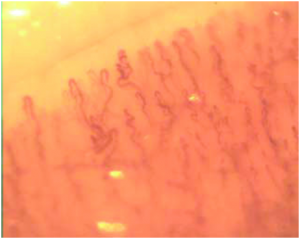
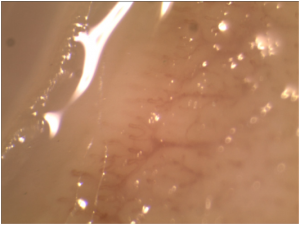
Irregular formation of vessels in the form of atypical capillaries cause the stroke risk in children and teenagers. The vascular screening technology allows for certification of vessels in infants and for adequate stroke prevention in children and teenagers.
Atypical formation of angioarchitectonics – three-corn capillaries and inadequate venular network of a newborn. High risk of delay in the psycho-physical development and venous bleeding.
SUBTECHNOLOGY Cardiology and Cardiac Surgery
Specialists are able to provide the complex diagnostic examination of the smallest element of the cardiovascular system – capillary, which enables to diagnose and develop treatment systems and preventive measures without surgical intervention, if necessary, in cardiac surgery – to quickly assess the effectiveness of the operation into the operating table.
The subtechnology allows monitoring changes in the patient’s state at each stage of treatment without complex diagnostic procedures.
The Capillaroscopy method is an arbitrator of welfare of the cardiovascular system in the human body.
The weakness of capillary blood filling in the background of vegetative-vascular dystonia, hypotension with moderate venous congestion and compensatory vasoconstriction.
Moderately expresssed signs of blood deficiency on the background of the expressed subdecompensated venous stasis in stretch dilated venous nets and compensatory vasoconstriction with preserved myocardial function after coronary artery bypass grafting.
SUBTECHNOLOGY Angioneurology
Today, in the world diseases like stroke and myocardia strike younger population, which leads increase in the mortality rate on 40% (stroke). And we require some modern diagnostic tools that would allow a comprehensive vision of the problem in a minutes, which reduces budgets for rehabilitation at clinics after vascular accidents. The government should focus on prevention of health disorders, and not on their treatment.
Expressed signs of the perfusion decrease in a patient with vascular dementia at the beginning of treatment. In dynamics it was succeeded to improve cognitive sphere on the background of restoration of capillary blood filling.
Severe cardiovascular system imbalance in the patient.
Diagnosed condition after suffering extensive ischemic stroke. The picture shows expressed signs of arterial tissue ischemia, the dominance of venous stases with signs of microaggregation in dilated venular nets. High risk of recurrent stroke.
SUBTECHNOLOGY Vascular abnormalities in psychiatric practice
Currently, all employers realize that a mentally stable employee raises its efficiency by 20%. cerebral circulation disorders are the main cause of worsening of mental state of a person. This leads to asthenia, chronic fatigue syndrome, neuroses, and other border states.
The purpose of this subtechnology – early detection of abnormal conditions of blood vessels.
Patients with mental health problems almost does not have any examinations of the vascular system, which would allow to identify congenital or acquired vascular disorders and partially correct them, thereby improving the quality of life of these patients. The positive experience of supervision of patients with psycho-speech disorders, autism, epilepsy allow us to have fresh look at this problem and affirm the importance of a comprehensive cardiovascular diagnosis in psychiatry.
The technology is designed to examine the microcirculation and receive individual assessment of the adequacy of the cortical blood supply to needs of brain tissue.
Atypical type of the capillary angioarchitectonics with numerous spikes leads to a violation of principles of continuous blood supply to the brain of patients with autism and correlated with signs of reducing brain perfusion in the temporal areas (according to PET).
Juvenile type of angioarchitectonics distorted by tree-like bifurcation of venular trunks in a patient with schizo-affective disorder.
SUBTECHNOLOGY dynamic monitoring in angiotherapy
Main aspect of this technology is the possibility of obtaining fixation of necessary parameters at all stages of therapy that enables spetialists dynamically react to results obtained and adjust treatment plans in accordance with patients’ needs .
This diagnostic sub-technology provides significant benefits to health care units that use it.
There is an example of the successful treatment of disorders in microcirculation under control of the smart capillaroscopy in a patient X, 63 years old, with complaints to polymorphic pains in his lower extremities, sensation of cold in his legs, complaints to sensation of his foots freezing even in summer. According to his anamnesis – he has been suffering from the continuous form of the bradycardiac atrial fibrillation, the atrial fibrillation, arterial hypertension for the last 7 years.
Main vessels – signs of decreasing of the pumping function of the myocardium, moderately expressed venous congestion, sharp decreasing of the blood pressure in the proximal segments of the main arteries in his hip.
Taking into account peculiarities of functioning of the myocardium the decision was made about vasoactive correction of the hemodynamic parameters with double purpose:
- 1. As much as possible to recover the level of microcirculatory perfusion and to stabilize the obtained results.
- 2. Within the protective regimen to improve parameters of the pumping function of the myocardium preventing increasing of the myocardium ischemization’s signs.
Since the capillaries are the final link in the blood supply in the cardiovascular system, monitoring of changes and sanogenic restructuring is quite important for monitoring the treatment effectiveness and it is an element of evidence-based medicine in the individually oriented treatment .
1st day. Improved blood filling in capillaries in the fingers, in the capillaries of the toes – the first signs of blood filling.
5th day. The blood filling of capillaries is sufficient in the fingers; the area of the perivascular edema is decreasing. Visualization of abnormal very tortuous capillaries in the toes, the expressed stagnation in the venular segment.
10th day. There is a leveling of the capillaroscopic picture in the fingers and toes. On the foreground there is a tortuosity of capillaries, the expressed perivascular edema in legs. The velocity of blood flow is sufficient.
15th day. The sufficient blood filling of capillaries in the fingers. There are angiospastic reactions in arterioles on the background of the expressed venous congestions in the toes.
In 5 days after completion of injections. The presence of blood filling of capillaries in fingers and considerable improvement of visualization of capillaries in toes, sufficient velocity and caliber of capillaries testify for improvement of the microcirculation level and partial stabilization of the achieved results of treatment in spite of significant problems in the systemic hemodynamics.
In the dynamics of the treatment it was succeeded to improve the quality of life, to reduce discomfort in the legs and to normalize the body temperature.
Vascular monitoring in rehabilitology and balneology
This subtechnology enables to visualize and record the patient’s condition at the “entrance to the facility,” in the course of treatment, and at discharge. An important aspect of health resorts is to identify risks of vascular accidents at the start of spa treatments. This may be like an evidence for protection of the sanatorium, spa and rehabilitation center. Also, it can be widely used to study the dysfunction of the vascular system with a subjective sensation of discomfort in order to reduce risk prior to the various treatments. Thanks to this technology in the spa and rehab treatments the patient can observe positive changes owing to the recreational therapy. At the end of treatment, the patient receives a clear picture of what real qualitative changes have occurred during rehabilitation.
A stage of preparation to some group activity in a preschool establishment became possible due to the circulation improvement and strengthening of cognitive functions (Yana М., born in 2001; diagnosis: autism, arrest of psycho-motor development).
Psychokinesitherapy helps to restore sanogenic reactions of the vascular system to psychological and physical loadings, to prepare the vascular system to the body verticalization of the patient after long staying in bed (Oleksander F., born in 1977; diagnosis: apallic syndrome, stage of “large” (full) consciousness, 1st degree of disability).
Kinesitherapy at the stage of destruction of psychogenic factors of the disease (Vladimir S., born in 1985; diagnosis: epilepsy).
The background worsening of the capillary blood filling can be compensated by kinesitherapy (Mary M., born in 1951; diagnosis: cortical-subcortical brain degeneration).
Interchanging of various neurorehabilitation exercises takes into account a level of blood filling and the brain readiness to loads (Galya K., born in 1989, diagnosis: apallic syndrome, the stage of “high” full consciousness, 1st degree of disability).
Subtechnology Endocrinology
Endocrinology problems are closely related to cardiology, oncology, ophthalmology, and other areas; this stipulates application of innovative approaches to diagnosis of a patient’s condition, namely human organism as integrated diagnostic object. This subteсhnology enables to examine more carefully the system dysfunction of the respective glands and to differentiate hypophysar intersystem disorders ranging from local disorders in endocrine organs.
Specific patterns in thyroid cancer.
Diencephalic syndrome
Pathological alteration of the microcirculation on the background of menopausal disorders. Fibroma uteri.
Menopause
Subtechnology Onco-capillaries
This technology allows diagnosing onco-diseases in the early stages and can be the basis of state compliance program for early detection of cancer. The diagnostic system can be considered by the Ministry of Health to address the problems of oncology and specialized clinics for the cancer treatment.
The subtechnology offers an innovative approach to the cancer diagnosis and, importantly, it is an effective tool in the future monitoring of the patient and the disease at different stages of cancer pathology.
This technology can form the basis of modern electronic system for monitoring medical examination of cancer patients and their treatment patterns.
The government can obtain an effective tool for the prevention and treatment of cancer.
Pathological angiogenesis is the basis for the tumor development. Timely detection of uncontrolled processes of hypervascularisation can significantly improve the patient’s condition.
Subtechnology
For dentistry
Nowadays, the society pays much more attention to prevention of dental disease than to treatment. Actually this subtechnology is created for timely and complete diagnosis of microcirculation in gums, which allows specialists to develop individual programs for prevention and medical treatment of periodontitis and periodontal disease.
Subtechnology
For pharmacology
This subtechnology allows getting the visualized assessment of the patient’s state before vascular treatment and after its completion, which confirm the effectiveness of medicines.
Diagnosis: vasoneurosis of the sympathoadrenal type. Before the treatment.
Diagnosis: vasoneurosis of the sympathoadrenal type. After the treatment.
Subtechnology
For insurance
Today life insurance is one of the hardest segments in the insurance industry, which is caused by high-risk because of lack of an objective assessment of the insured.
This subtechnology allows for an integrated assessment of the adequacy and functioning of the basics of life activity of the body, namely the cardiovascular system.
This subtechnology in the screening mode makes it possible to assess risks of vascular events and predict possible insurance claims.
Slight risk of vascular crises.
High risk of vascular catastrophes as well as the organ pathology.






